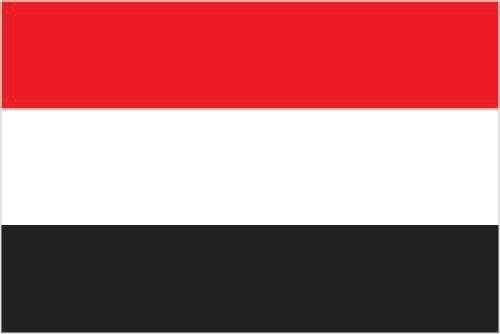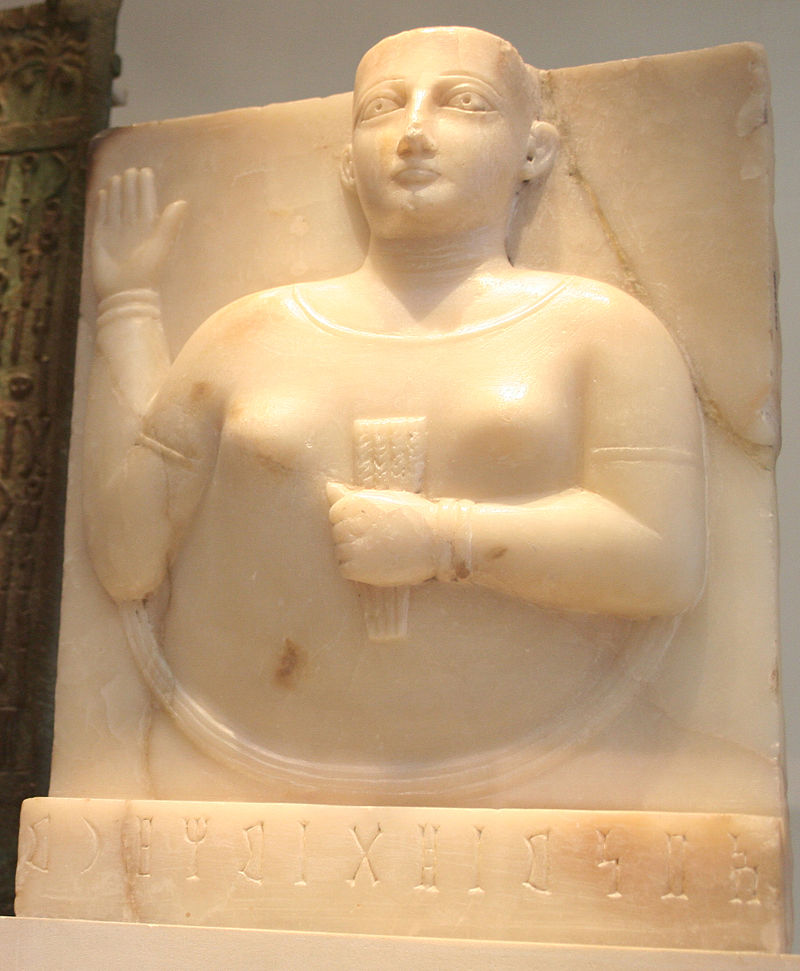176 Yemen

Three equal horizontal bands of red (top), white, and black. The band colors derive from the Arab Liberation flag and represent oppression (black), overcome through bloody struggle (red), to be replaced by a bright future (white).
Flag courtesy of the CIA World Factbook

Map courtesy of the CIA World Factbook

A Sabaean gravestone of a woman holding a stylized sheaf of wheat, a symbol of fertility in ancient Yemen
Government
According to Britannica, the former states of North Yemen and South Yemen had sharply contrasting political systems. North Yemen was a republic governed nominally under a constitution adopted in 1970, suspended in 1974, and largely restored between 1978 and the late 1980s. Although a succession of bodies carried out some of the functions of a legislature, they exercised little real power until the late 1980s. During that period, policy making remained in the hands of a relatively progressive military elite that worked closely with a variety of civilians that included a large and growing group of technocrats, the major tribal leaders, and other traditional conservative notables. Although political parties were formally banned, several parties did exist and operated with varying degrees of influence during and between elections.
South Yemen, also republican in form, had an avowedly Marxist regime, and the political system and economy reflected many of the goals and organizational structures of its “scientific socialism.” The Yemen Socialist Party (YSP), the only legal political organization, determined government policy and exercised control over the state administrative system, the legislature, and the military.
The unified political system created in 1990 represented a pronounced departure from either of the previous ones, in theory and, to a large extent, in practice. The most important change was the decision to establish a multiparty representative democracy.
The 1990 constitution (amended in 1994 and 2001) called for those rights and institutions usually associated with a liberal parliamentary democracy. The head of state is the president, who appoints the vice president and the prime minister; the latter is the head of government. The president, elected by direct popular vote, holds office for no more than two seven-year terms and is assisted by a cabinet. The bicameral legislature consists of two houses: the House of Representatives, whose members are elected by universal adult suffrage every six years, and the Shūrā (Consultative) Council, whose members are appointed by the president. The legislature oversees the executive, discusses and drafts legislation, and authorizes government budgets and economic plans. The constitution may be modified with a two-thirds vote by the House of Representatives.
The issue of redefining territorial and administrative subdivisions after union was complex. In the north the provinces had corresponded to more or less obvious topographical regions. Each province was subdivided into qaḍāʾ (district) and nāḥiyah (tract) levels, largely representing distinctions within the population (e.g., tribal affiliations). In the south, under the British, there had been a major distinction regarding administrative autonomy and political influence between the city of Aden (governed directly from London via the colonial office) and the hinterland, which was divided into more than 20 “statelets,” many of which were clearly associated with ancient tribal groupings of one form or another. In order to break down the old tribal affiliations and the associated economic and political factionalism, the post-independence government abolished these traditional units and reorganized the country into governorates (muḥāfaẓāt).
United Yemen eventually embraced a system based, as in South Yemen, on a series of governorates—20 in total, not counting Sanaa, which forms its own unit. The governorates are in turn divided into several hundred districts. The governors of the governorates are appointed by the federal president, but each jurisdiction has its own elected council. An important issue that remains to be resolved is the amount of authority that the governorates will have in the federal system. The trend in both the north and the south was to provide the governorates with a high degree of autonomy. The first municipal elections under the Local Authority Law (1999) were held in 2001. However, Yemen has lacked the infrastructural resources to conduct efficient local elections, and safeguards providing protection from the interference of the central government have been slow to materialize.
The two parts of the new state had markedly contrasting legal traditions. In the north the legal system had been a mix of Sharīʿah (Islamic law) and ʿurf (tribal custom). In the south the legal system was a mixture of Sharīʿah in matters of personal status (e.g., marriage, divorce, inheritance) and British commercial and common law (modified to suit the needs of the Marxist government) and, in rural areas, a combination of Sharīʿah and ʿurf.
New legal codes were promulgated in 1991–94. Each district has a court of first instance, and each governorate has a court of appeals; the Supreme Court is located at the capital. These courts have full competency to hear all civil and criminal cases. The Supreme Judicial Council oversees the court system. There are a number of specialized courts. Under the constitution, Sharīʿah is the source of all legislation.
Civil / National Aviation Authority (CAA/NAA)
Civil Aviation & Meteorology Authority (CAMA) is the entity which has been formed after the 22nd of May 1990, the historic date of Yemen Unity Day. Although CAMA has practiced its duties and responsibilities from that time until the issuance of the Republican Decree no. (444)/2000 of the new entity on November 2000. By this decree, CAMA established its goals and the tasks related to Civil Aviation, financial system, organizational structure, regulating the fields that are managed by CAMA.
Airspace
SkyVector – Google Maps – ADS-B Exchange
ICAO countries publish an Aeronautical Information Publication (AIP). This document is divided into three parts: General (GEN), En Route (ENR) and Aerodromes (AD). ENR 1.4 details the types of airspace classes they chose to adopt from classes A through G.
Drone Regulations
Currently, there is no legal framework for the use of drones.
Advanced Air Mobility (AAM)
Short Essay Questions
Question 1
You have been hired by a Drone Startup Company. Your boss has immediately assigned this job to you.
They need you to prepare a one-page memo detailing the legalities of using a drone to film in Yemen.
They need you to mention any national laws and local ordinances.
They specifically want to know what airspace you will be operating in and whether or not you need an airspace authorization.
Does it matter whether or not you are a citizen of the country?
Lastly, there is a bonus for you if, as you scroll through this chapter, you find any typos or broken links!
Question 2
Do you need a certificate to fly UAS?
If so, how do you obtain one?
Are there fees associated with this?
If so, how much?
Question 3
May you operate beyond visual line of sight?
If so, what procedures must you follow?
Question 4
Does the country have UAM/AAM laws? If so, describe, citing the exact law.
Question 5
Are you aware of any new laws or policies not mentioned above? If so, describe, citing the exact law or policy.

